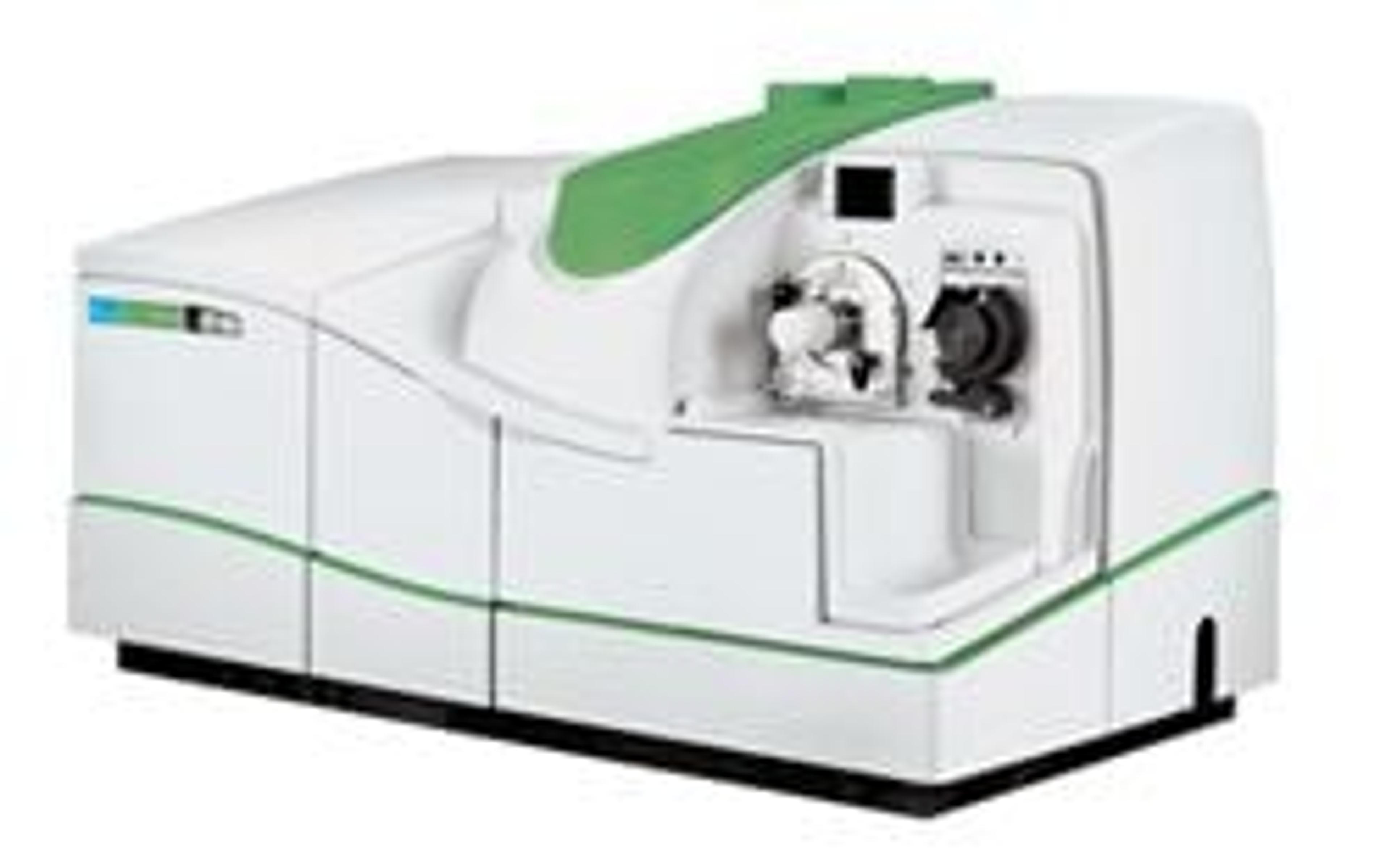Rapid Single Particle ICP-MS Analysis of Engineered Nanoparticles in Food Crops
Detecting engineered nanoparticles (ENPs) in food crop using SP-ICP-MS
31 Aug 2015
Hear how Dr. Honglan Shi, Associate Research Professor and Laboratory Director of the Center for Single Nanoparticle, Single Cell and Single Molecule Monitoring (CS3M) at Missouri University of Science and Technology (Missouri S&T) and her research team, in collaboration with PerkinElmer, uses SP-ICP-MS to detect engineered nanoparticles (ENPs) in food crop.
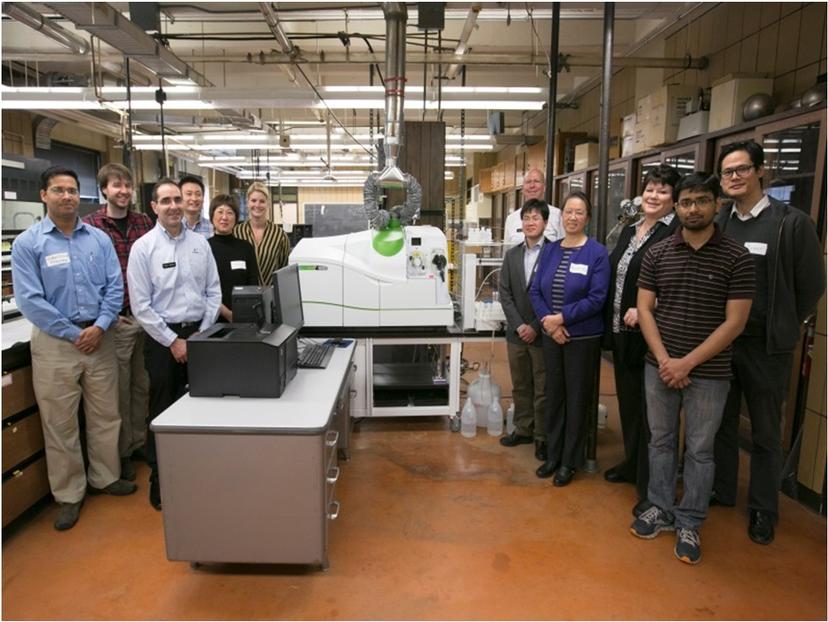
The research team at Missouri S &T collaborates with PerkinElmer, Inc. for innovative SP-ICP-MS method development of nanoparticle analysis
In recent years, the dangers of environmental contaminants and their effects on humans has been a growing concern. One such class of contaminants is novel engineered nanoparticles (ENPs), which can potentially be exposed to humans through food crop consumption. The ability to detect such contaminants at low levels is of great interest for consumer welfare.
At the Missouri University of Science and Technology, Associate Research Professor Dr. Shi’s research group uses novel single particle inductively coupled plasma-mass spectrometry (SP-ICP-MS) technology to detect ENP uptake in food crops. SP-ICP-MS is an emerging technique for metallic ENP analysis advanced by PerkinElmer through the high-throughput NexION® 300D/350D ICP-MS with Syngistix Nano Application Software Module. Dr. Shi recently presented her findings at the PerkinElmer INspiring INnovation symposium. "Current technologies have shown limitations in revealing the unique characteristics of ENPs after they enter plant tissues," says Dr. Shi. "High-throughput techniques capable of simultaneously measuring ENP size, size distribution, concentration, and dissolved analyte concentration in complex matrices at environmentally relevant concentrations are in urgent need. Our novel enzymatic digestion method and unique capability of the SP-ICP-MS can potentially fill the gap and provide a rapid approach to characterize and quantify ENPs in plant tissues."
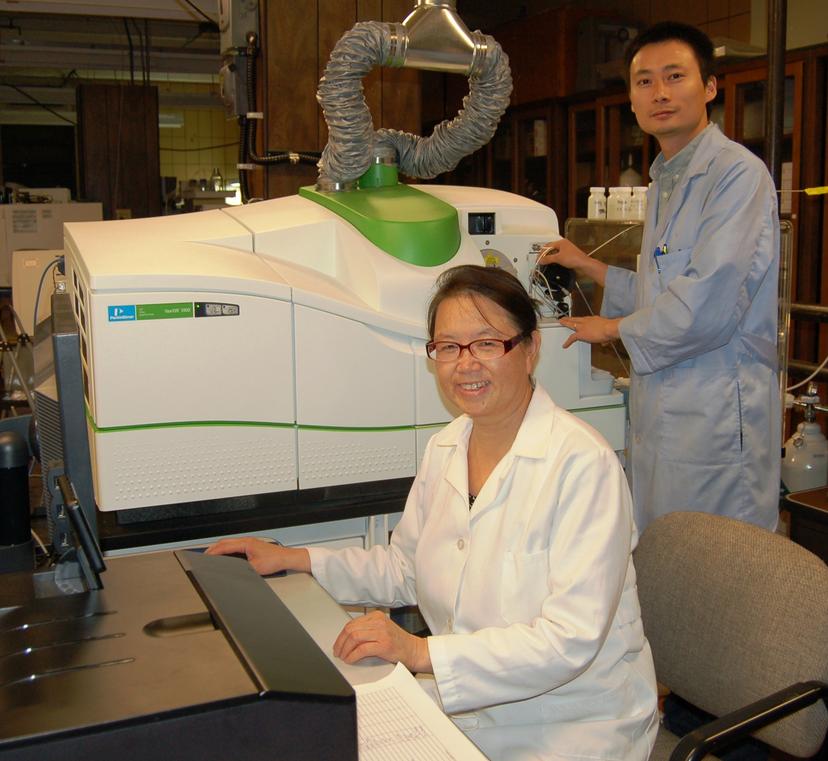
Dr. Honglan Shi (front) and her student, Yongbo Dan analyze food plant samples using the PerkinElmer NexION 300D/350D ICP-MS
Environmental contaminants
"A significant number of publications have shown that ENPs are toxic to humans, animals and plants to some extent, and ENPs have become a class of emerging environmental contaminants. Interactions between ENPs and plants, especially agricultural crops, represent a potentially important pathway for human exposure to these ENPs. Consequently, it is imperative to understand the uptake and accumulation of ENPs in plant tissues and their unique physical and chemical properties within plant tissues.”
“Gold NPs (AuNPs) are one of the most commonly encountered metallic ENPs, and we are collaborating with Dr. Xingmao (Samuel) Ma, Associate Professor at Texas A&M, who is also a member of CS3M at Missouri S&T, to develop general protocols that can be fine-tuned to characterize many other metallic ENPs in plant tissues. The developed technology will greatly benefit the investigation of fate, transportation, transformation, and mechanism of ENP phytotoxicity, as well as human health impacts."
The experiment
"The tomato tissues are enzymatically digested to release the ENPs from tomato plant tissue. The enzyme hydrolyzes the plant tissues without affecting the ENPs. After digestion, the samples are analyzed by SP-ICP-MS to measure AuNP particle size and distribution, particle concentration, and dissolved Au concentration simultaneously."
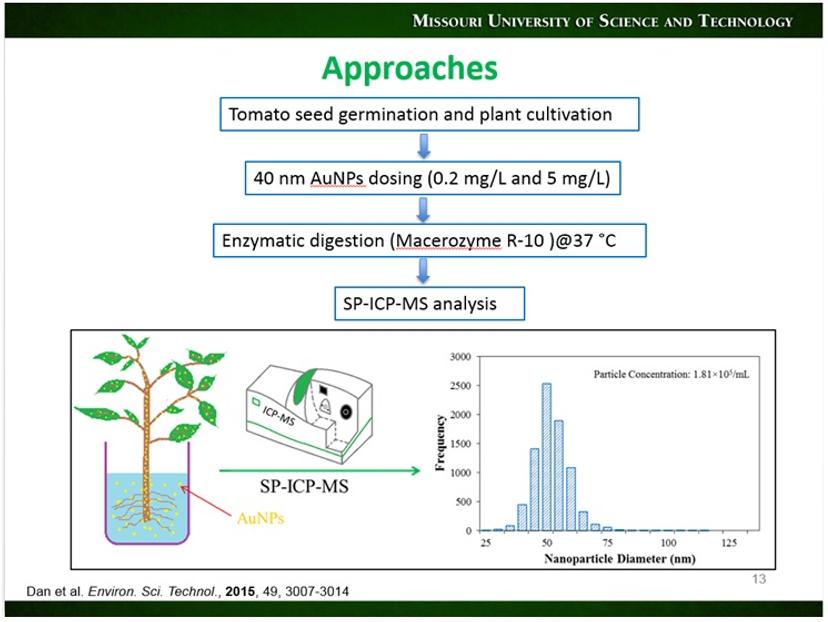
Dr. Honglan Shi's approach to ENPs analysis
"The NexION 300D/350D ICP-MS system with a unique Syngistix Nano Application Software Module dedicated for SP-ICP-MS analysis was used for this research project. The major advantages of this system are its super sensitivity, specificity, short dwell time, high throughput, multi-parameter detection, real-time monitoring, and multi-element capability. It can detect down to 1000 particles/mL or sub-part per trillion level. The particle size, size distribution, particle concentration, and dissolved metal element concentration in a sample can be all resolved in 60 seconds or less. Currently, no other technology has these capabilities."
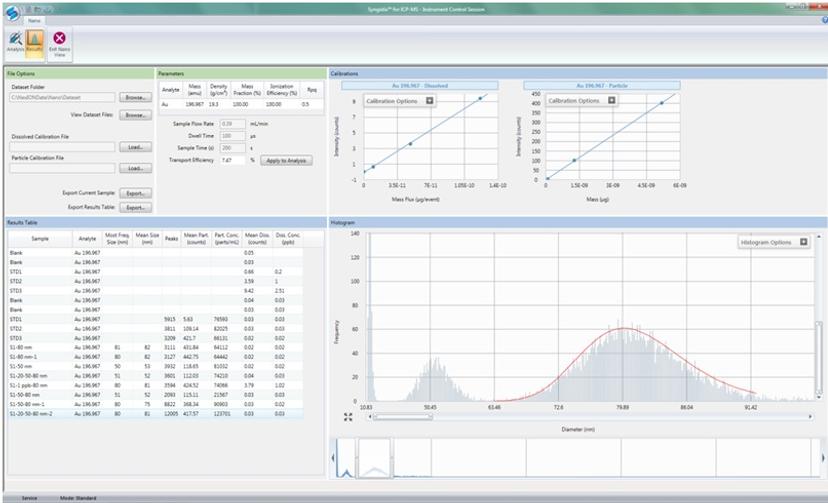
Syngistix Nano Application Module Results Tab – Example of Nano Particle Analysis
Results
"The results of this study demonstrated that tomato plants can uptake 40 nm AuNPs and transport them up to tomato shoots. The Macerozyme R-10 enzyme is effective to extract the AuNPs from tomato plant tissues as intact ENPs, without causing the ENPs dissolution and aggregation. The SP-ICP-MS is a sensitive and reliable method for AuNPs characterization and quantification in plant matrices."
Future
"The future of our research will focus on the applicability of the developed method for different plant species with different sizes, ages and anatomical structures, as well as the applicability for different ENPs. In addition, we plan to investigate the fate of ENPs in plant tissues after uptake, including the aggregation status, rate, and ratio of transportation to different subsections of the plants such as leaves, fruits and seeds. It is also important to consider the impacts of the ENPs on food crops and subsequent human exposure."
Acknowledgments
Yongbo Dan1,2, Weilan Zhang3, Xingmao Ma2,3, Honglan Shi1,2, Chady Stephan4
1. Department of Chemistry, Missouri University of Science and Technology
2. Center for Single Nanoparticle, Single Cell, and Single Molecule Monitoring (CS3M), Missouri University of Science and Technology
3. Zachry Department of Civil Engineering, Texas A&M University
4. PerkinElmer, Inc.
Ref: Environmental Science & Technology [49(5):3007-3014, 2015, DOI: 10.1021/es506179e].
Learn from leading researchers like Dr. Shi at the PerkinElmer INspiring INnovation Tour Symposiums:
North America
EMEA
- San Francisco, California,September 10
- DACH Region INTour, 9 Locations
- Iselin, New Jersey, September 17
- Croatia, October 19
- Los Angeles, California,September 24
- Hungary, October 20
- Kansas City, Kansas October 1
- Czech Republic, October 22
- Albany, New York, October 29
- Belgium, October 29
- Houston, Texas, November 12
- Netherlands, November 4

